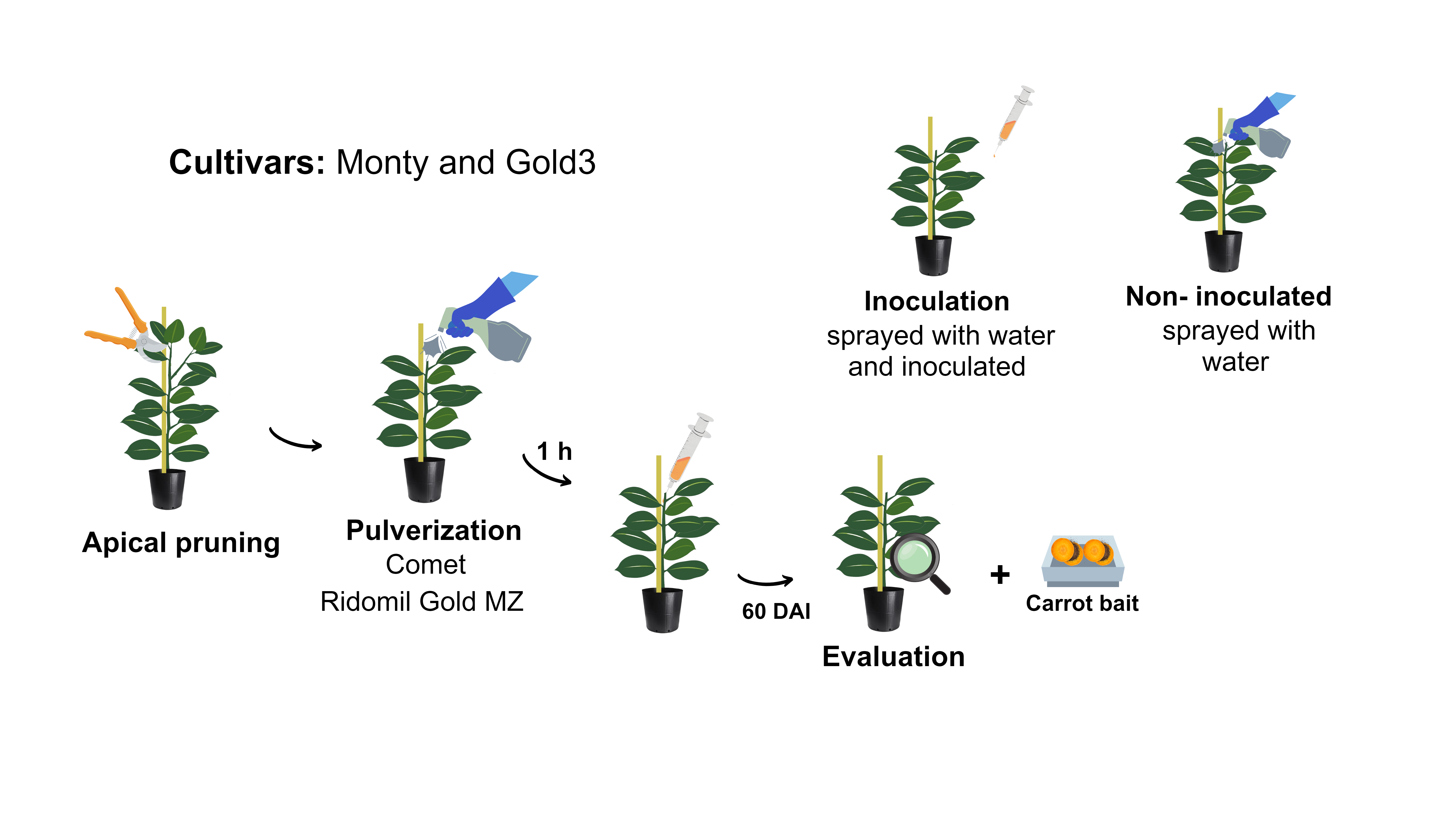In vivo assays for determining efficacy of fungicides as wound
The most effective fungicides (metalaxyl + mancozeb and pyraclostrobin), found in vitro assays, were tested as pruning wound protectors against C. fimbriata infection on Gold3 and Monty kiwifruit cultivars. For this, the shoot apex of the kiwifruit vines was pruned and each fungicide solution at 250 mg active ingredient (a.i.). L-1 was sprayed, in a volume sufficient to obtain thorough vine coverage, using a manual pressure regulated sprayer. After 1 h, 500 µL of inoculum suspension of C. fimbriata (LPF1443) at 1.0 x 107 spores/mL was applied on pruned shoot apex of each vine. A swab of moistened cotton was placed in the inoculation site and the treated plants were incubated in a greenhouse (28 ± 5 °C), with regular irrigation. Two references were adopted for comparison: 1) non-inoculated control: pruned vines sprayed with distilled autoclaved water; and inoculation control: pruned vines sprayed with distilled autoclaved water and inoculated, as shown in the figure below.

A completely randomized design with five replicate plants per treatment and controls was used. At 45 days of inoculation, the disease incidence (number of infected vines divided by the number of inoculated vines and expressed as percentage) and lesion length (cm), in the inner stem tissues, were measured. The infection by C. fimbriata was confirmed using carrot baits, prepared with stem tissue samples from the evaluated plants. The experiment was repeated once.